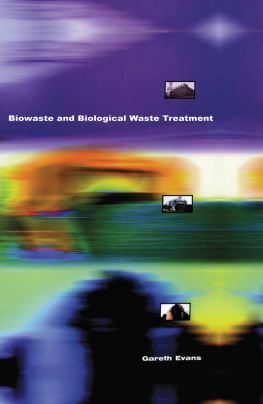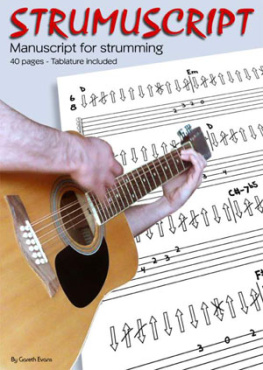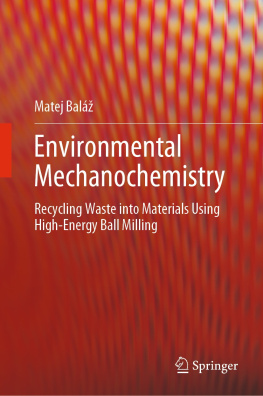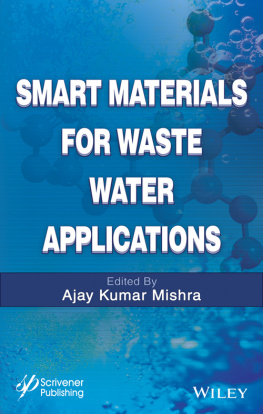Biowaste and Biological Waste Treatment
Biowaste and Biological Waste Treatment
Gareth Evans
First published 2001 by James & James (Science Publishers) Ltd
This edition published 2013 by Earthscan
For a full list of publications please contact:
Earthscan
2 Park Square, Milton Park, Abingdon, Oxon OX14 4RN
Simultaneously published in the USA and Canada by Earthscan
711 Third Avenue, New York, NY 10017
Earthscan is an imprint of the Taylor & Francis Group, an informa business
2001 Gareth Evans
The moral right of the author has been asserted.
All rights reserved. No part of this book may be reprinted or reproduced or utilised in any form or by any electronic, mechanical, or other means, now known or hereafter invented, including photocopying and recording, or in any information storage or retrieval system, without permission in writing from the publishers.
A catalogue record for this book is available from the British Library
ISBN: 978-1-902916-08-8 (hbk)
Cover photos courtesy of Tony Boydon and Talbotts Heating Ltd.,
A.R. Newton (Morawetz UK Sales) and Gareth M. Evans.
Contents
by Dr Caroline Jackson MEP
Chairman of the European Parliaments Committee on the Environment, Consumer Protection and Public Health.
This is a timely book on an unglamorous subject, but one which repays study. Action by the European Union, in the form of new legislation on waste, and especially through the 1999 directive on landfill, has brought the issue of waste disposal up the agenda dramatically When the directive first appeared, I described the United Kingdom as one of Europes last throw away societies because we send to landfill over 80% of our household waste.
All EU Member States are now committed to meeting the directives timetable to reduce the amount of biodegradable waste going to landfill over the next 20 years. In the case of the United Kingdom, and other major landfill users such as Spain and Greece, the directive implies a major switch in policy from landfill to other forms of waste management. This is not only a huge challenge for local authorities and local planners, but also a test for government. It is small comfort that other developed and developing countries are grappling with the same problem.
In this book Gareth Evans provides a comprehensive account of the biowaste question, covering not just the technologies but the underlying practical issues of implementation as well. It is too easy for politicians and others to make out that our waste management problems can be solved simply by increasing recycling and opting for waste minimisation strategies. These will play a role, but they are only part of the answer. Biowaste and biological waste treatment must be taken into account and explored as we move away from over-reliance on landfill.
This book will be a useful resource for all those professionally involved client and contractor in waste management at this crucial stage in its development, and I commend it to the reader.
Caroline Jackson MEP
by the Rt Hon. Michael Meacher, MP
Minister for the Environment
The promotion of sustainable waste management is one of the Governments key environmental objectives. Our primary aim is to reduce the amount of waste which is generated and to manage the waste which is then produced by more sustainable means, such as re-use, recycling, composting and energy recovery.
The Government is determined to see an increase in the amount of waste composted and recycled, in order to meet the challenges of sustainable development and the stringent targets in the EC Directive on Landfill.
The Landfill Directive seeks to prevent or reduce possible negative effects on the environment by the landfilling of waste. It aims to ensure high waste disposal standards by setting rigorous controls on the operation of landfill and the emissions from these sites. Many of these controls are similar to those already in place in England for landfills.
To control emissions of methane (a powerful green house gas) from landfill, the Directive sets out challenging targets for reductions in the landfill of biodegradable municipal waste. These targets require us to landfill less and less of this waste over the next two decades to just 35% of the amount of such waste produced in 1995. Meeting these targets will require the diversion of substantial amounts of this waste to municipal waste alternatives, such as composting, recycling, energy from waste and other technologies. This represents a major step-change for the management of municipal waste in this country, and a challenge for local authorities, the waste industry and Government.
This challenge is a central theme of this Governments strategy for waste, which was published in May 2000. In this, the Government set two goals of recycling or composting 30% of household waste by 2010, and recovering 45% of municipal waste (by recycling, composting and incineration with energy or heat recovery). Thereafter we expect to recover value from two-thirds of household waste, half of this by recycling or composting,
Already, an increasing number of local authorities are setting up centralised composting schemes to compost waste from their own operations, from separate household collections and from civic amenity sites. Voluntary groups, too, are setting up community composting schemes to collect and compost organic material on a co-operative basis. And there is a growing trend towards encouraging individual householders to compost their own biodegradable waste.
The actions, targets and aims that I have outlined here, illustrate this Governments commitment to an integrated approach to waste management, and the move towards sustainable development as a whole.
Waste costs us all money. It is in the interests of every person, every business to cut the amount of waste we generate. Sometimes the simplest actions for example redesigning a product to make better use of the materials from which it is manufactured, or to make it more easily recycled once its working life is over can lead to substantial savings.
Government cannot achieve this radical change on its own. Everybody every business, every householder, every community group and service provider has a role to play in making sustainable waste management a reality across the UK. We must all become more waste-aware, and we must all start taking a more active, responsible attitude to the waste we all generate.
I became involved in biological waste treatment largely by accident. As a child it had never really occurred to me to wonder what happened to the refuse we threw out every week. Although we had a compost heap of sorts, and I had a vague notion that our dustbin contents went to what was then called the dump, it never dawned on me that the two things were in any way related. Likewise, throughout my studies of biology, I do not recall ever being aware that a whole profession existed to make practical applications of biodegradation. For me, decomposition was something which happened on the forest floor, or at the bottom of the ponds frequented by the gulping toads and fragile newts that I loved so much. Having been plucked, not quite literally, from those amphibian infested waters, I now know differently.
The purpose of this book is to examine the present, and likely future, state of biological waste treatment. Something of a Cinderella science, this has at last begun to assume greater importance as an increasingly necessary part of modern waste management, driven, in no small part, by the burgeoning of stringent environmental legislation around the world. The discussion falls naturally into three parts. The first section () examines the various policy questions and local, social and economic factors which affect the implementation of biowaste initiatives.













